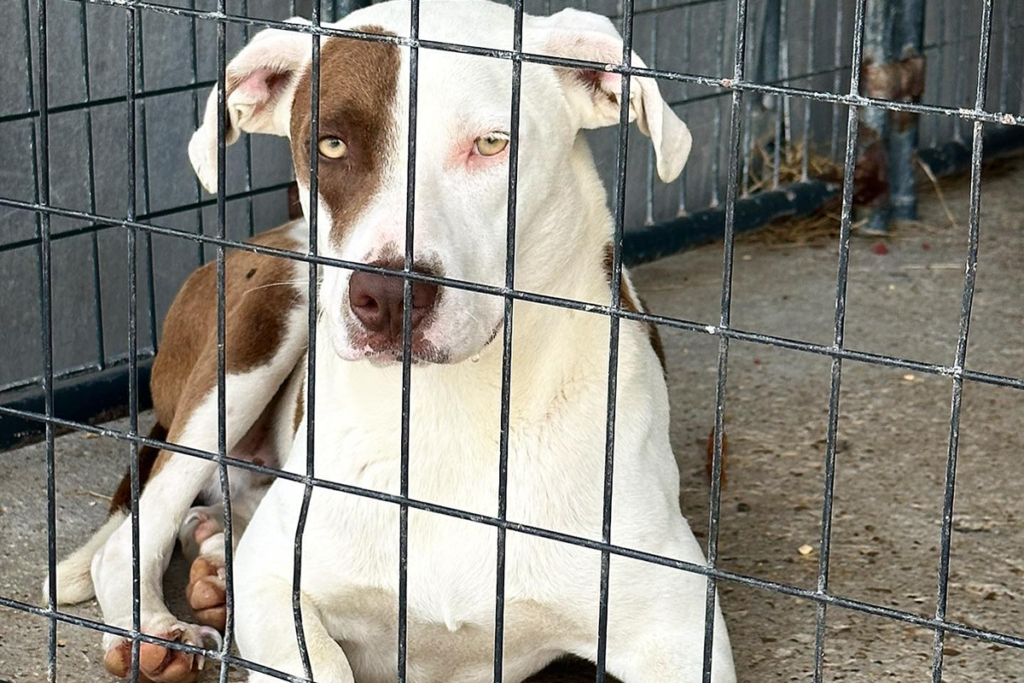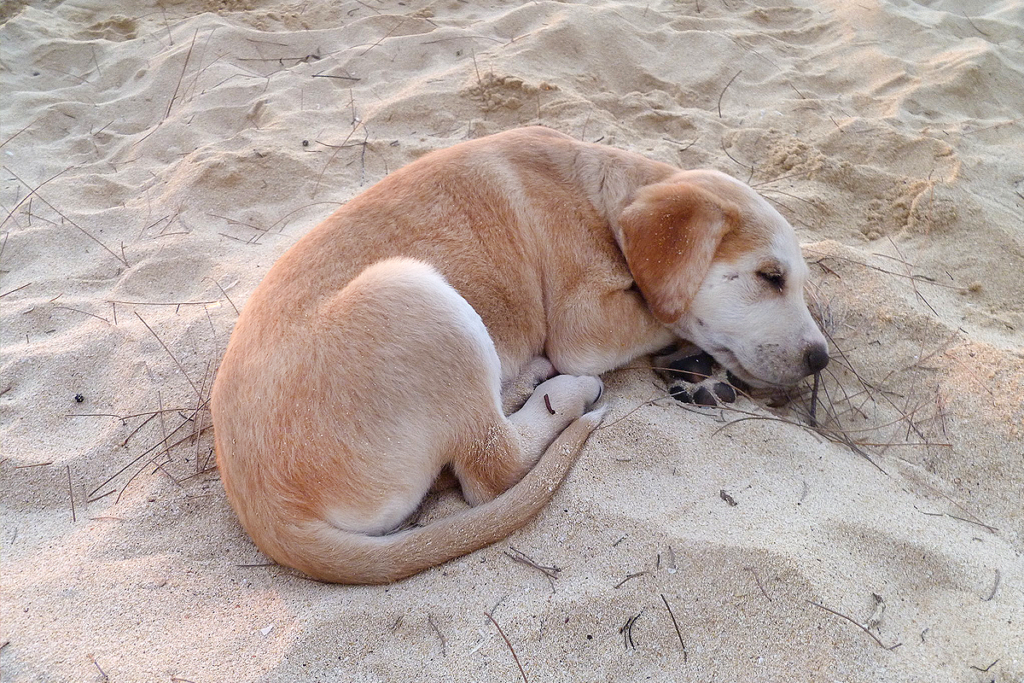As spring gives way to summer, schools let out for three sun filled months, and vacation plans are made, state and national parks prepare for their busy season, as many of them will be destinations for outdoor enthusiasts, traveling families and weekend visitors. Parks are particularly popular with those who want to enjoy the great outdoors with their four-legged companions, and with 429 national park sites and 6,792 state parks across the U.S., opportunities for adventure are plentiful. As park popularity continues to grow since COVID, other opportunities are increasing as well.
A handful of organizations are training shelter dogs to work within parks and protected lands assisting in conservation and invasive species detection. As adoption rates remain down and shelter intake continues to surge, programs that offer alternatives to traditional adoption for homeless dogs are not only changing the future of rescue, but providing one.

Even the most docile dogs struggle in a shelter environment. Those with high-energy and intense personalities are often doomed to live out their lives within their shelter cages or are euthanized because they are deemed “unadoptable”. While these qualities make them difficult to place in a home environment, they often make them outstanding candidates for detection recruits, who can be specially trained to locate wildlife, identify invasive plant and animal species, root systems suffering from disease, as well as assist in data collection for conservation research. And part of what makes this training successful is working with a dog who exhibits obsessive play drive and an unrelenting toy focus, as well as the strength, agility, and energy for logging a lot of miles in rugged terrain.
Other benefits of utilizing dogs for this work is they are an efficient, highly-sensitive, and non-invasive way to gather high-quality data. Humans have approximately five million scent receptors in our noses; dogs can have upwards of 220 million, which is why they can detect a single teaspoon of sugar in a million gallons of water. Where we experience the world visually, dogs perceive a detailed scentscape. Dogs’ noses are designed so that they can smell continuously (not just on the inhale, as we do). They can determine which nostril an odor arrived in first, which helps them locate a scent in space. They even have an additional olfactory organ—and dedicated processing center in the brain—devoted just to scenting pheromones.
A dog’s sense of smell is 10,000 to 100,000 times better than a humans.
A successfully trained conservation dog can:
- Detect plants, animals, and scat that people simply can’t.
- Find targets up to 40 times faster than is possible with other methods.
- Give results instantly, with near-perfect accuracy.
- Search for multiple targets simultaneously with no reduction in efficacy.

One of the leading conservation dog organizations, Working Dogs for Conservation (WD4C), is appropriately located in Missoula, Montana. Their founders and talented team of trainers build upon techniques from narcotics identification, cadaver detection, and search and rescue, and continue to find ways to use dogs’ extraordinary sense of smell to protect wildlife and wild places. Several years ago, WD4C partnered with the International Fund for Animal Welfare (IFAW) to launch Rescues 2 the Rescue (R2R), a program that places high energy dogs in careers and homes that complement their vitality. To achieve this, R2R is creating standardized evaluation tools and platform for shelters and trainers to connect and communicate through a digital platform and resource center.
Kayla Fratt, a member of the WD4C team in Wyoming’s Yellowstone National Park, and her partner, a border collie named Barley track the presence of zebra mussels in the park’s waterways. Native to Russia and Ukraine, the mussels have cropped up in lakes around the world. They’re small. Adults are usually the size of a fingernail. But they reproduce in massive numbers, clinging to and gumming up drainage pipes, power plants, waterways and more. Zebra mussels eat the algae that native mussels and other aquatic animals need to survive. Without food, the native species die off. Meanwhile, the zebra mussels continue to spread, making them an invasive species. The only way to fight these mussels is to stop their tiny larvae from hitching a ride to new places. But those larvae, about as big as the width of two human hairs laid side-by-side, are tough to spot. They get into the tiny crevices of boats and motors, hiding until they reach a new lake. There they float free, starting a new infestation.
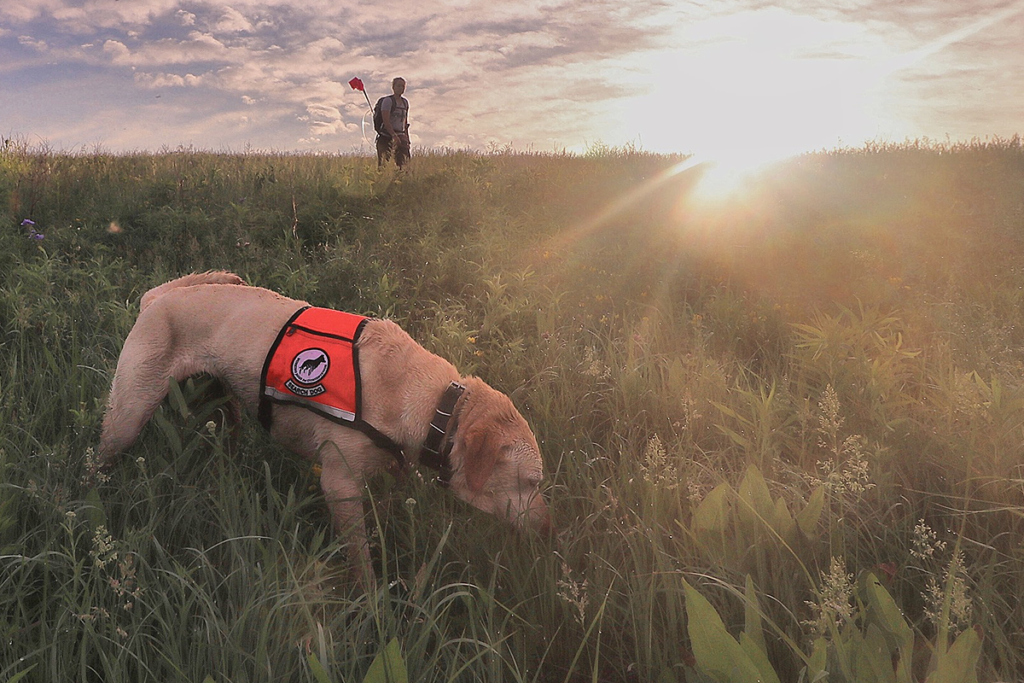
Hanging around one of the three boat ramps in Yellowstone, Kayla asks boat owners if Barley can check out their boat. This requires Barley giving the exterior of the boat a thorough sniff, hoping to detect the tiny zebra mussel larvae. When successful, Kayla pulls out Barley’s favorite ball and they play for nearly an hour as a reward.
Meanwhile, in Iowa, two WD4C dogs were working with biologist Aimee Hurt to locate Chinese bushclover. These invasive species releases chemicals that prevent other plants from growing and it is taking over native landscapes across the eastern United States. These extremely sensitive pups can differentiate between types of clover, while other dogs can identify scat from a diseased deer from those of a healthy one.
Samuel Wasser, a conservation biologist at the University of Washington in Seattle, employs several working conservation dogs for his studies. Some of the dogs are tracking wolves and their prey. Wolves are becoming more common in central Washington. Researchers want to know how their presence might be affecting other predators in the area. The dogs on this project are trained to find scat from specific carnivores: wolves, coyotes, cougars, bobcats, and black bears.
In four, six-week sessions, the dogs found 8,000 piles of waste — most of which would have been missed by people relying strictly on sight.
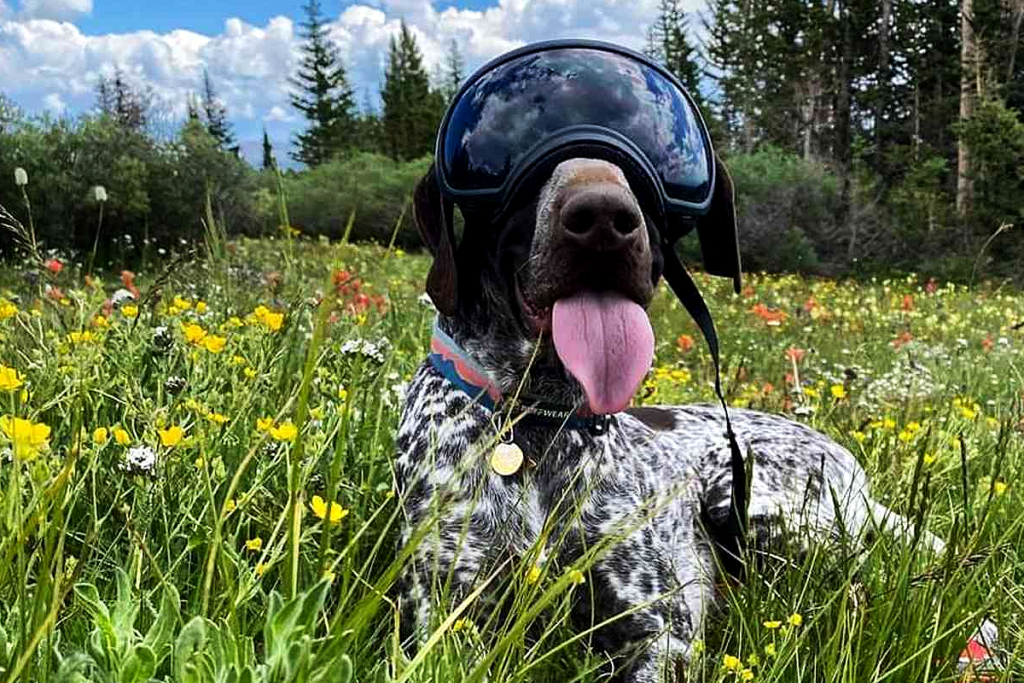
“We know where we found the [scat],” Wasser says. And from the feces, “we get DNA, telling us who excreted and what they were eating.” This lets the team see how the various carnivores are moving around. And that’s leading to insights about how competition with wolves is changing the diet of those other carnivores. “Dog sampling is fantastic for that,” says Wasser.
In 2019 Wasser’s fellow University of Washington colleague, Heath Smith, continued his Conservation Canine program by co-founding Rogue Detection Teams, with Jennifer Hartman in Rice, WA. The Rogue Detection Teams are made up of handlers, or what they call human bounders, and trained rescue dogs. Together with their team, they adopt the “rogues” of the shelter world; dogs with an obsessive need to play fetch & whose energy makes them otherwise challenging as pets in a home environment. Paired with their “bounders,” or their canine handler counterparts, the detection teams sniff and survey for data on cryptic species and odor in the wild, together.
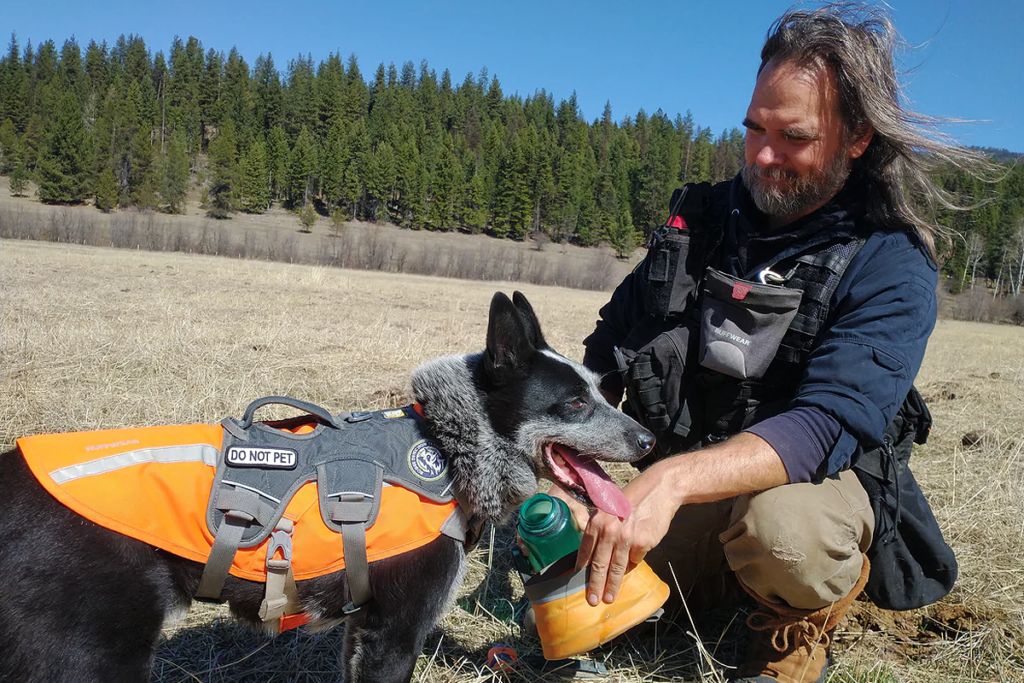
“When we first adopt our dogs, many are afraid, most do not trust, they have anxiety, and some are even afraid of the outdoors, of leaves crunching under their feet, or of stumps that maybe look like wild animals to them. But once we provide them another outlook on life by teaching them that when they sniff an odor for us in the wild, they get to play fetch for finding it – their big scary world turns into a wonderful, fulfilling game working alongside their bounder.”
– Rogue Detection Teams
Their detection dog teams have been deployed on several sensitive and endangered species projects across the U.S. and abroad, for many species of animals including pangolin, wolf, cheetah, orca, spotted owl, Sierra Nevada red fox, coastal marten, endangered butterfly larvae, bumblebee nest detection and many other ICUN Red List species.
Throughout these organizations, dogs are making amazing progress in this field. Other techniques for finding and studying elusive animals, things like radio collars and trail cameras, typically require that you already know where the animals are to begin with and that’s not always the case. However, dogs follow their noses where we might not think to look.
“I think we’re still breaking ground on what dogs can do, learning new things about species that don’t even have baseline data on them,” Hartman says.
Take the Oregon silverspot butterfly. The species is classified as threatened under the Endangered Species Act because it is only found in a half dozen coastal meadows in Oregon and California. And while scientists know that, in caterpillar form, the silverspot feeds on early blue violets, they don’t know exactly what kind of meadow habitats they prefer, because the species is so rare that only one caterpillar had been found in the wild since 1980.
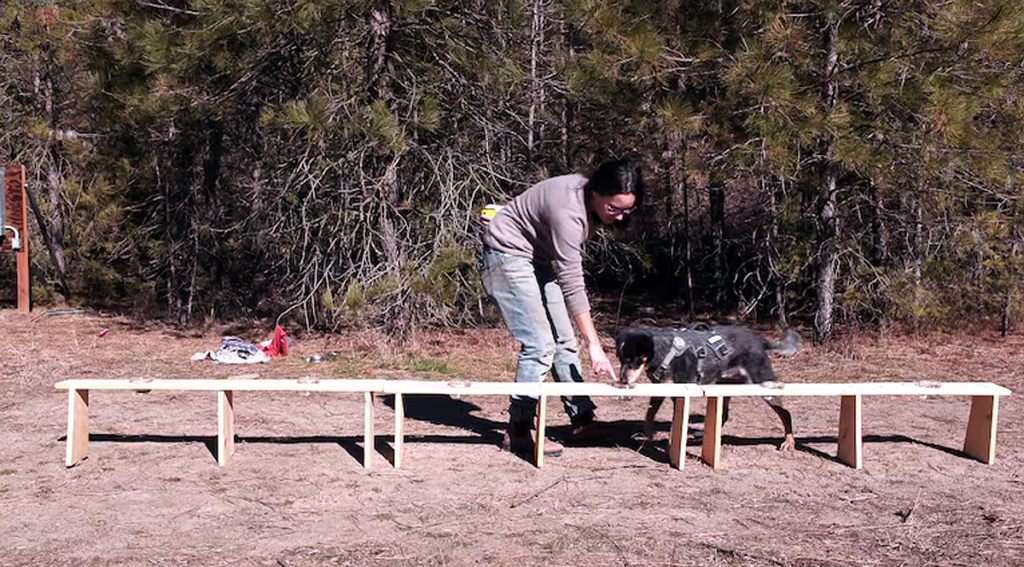
In 2021, scientists hired the Rogues to bring in Pips, an energetic and intelligent blue heeler. In a matter of four days, he found 13 caterpillars. Knowing where the caterpillars’ thrive will help officials figure out how to manage the landscape to nurture more silverspots, answering questions like, “do they do better in a mix of violets and grasses or areas where the grasses are trimmed or removed?”
But while the Rogues can work with any breed of dog, they’ve learned that it takes a special breed of humans to spend months in the field alone, backpacking through rugged, remote terrain and crawling through leech-infested jungles with fetch-obsessed rescue dogs.

“We have a dog that’s like a Chihuahua mix, a rat terrier or something. They’re not all high-drive labs. They come in all shapes and sizes, and they’re all rescue dogs, they’re all from shelters, and that’s something we think is really important.”
– Jake Lammi, Rogue Detection Teams
And so is the human-dog bond that is necessary for these teams to be successful. In early times, man walked these lands with their canine companions, hunting and gathering. Now with conservation and protecting our ecosystems so vitally important, it makes sense that we return to this intrinsic relationship in order to better understand and assist our environment.

It’s certainly something to think about as we find ourselves exploring park trails and enjoying beautiful vistas this summer. These majestic places are rugged, but their ecosystem is delicate. While the changes to land and wildlife is undeniable, they are amazingly resilient…much like a rescue dog who has found its purpose and place. Working together, we’ll presevere in protecting and preserving these amazing places for generations to come.
Get out there and explore ~ have a great summer!







